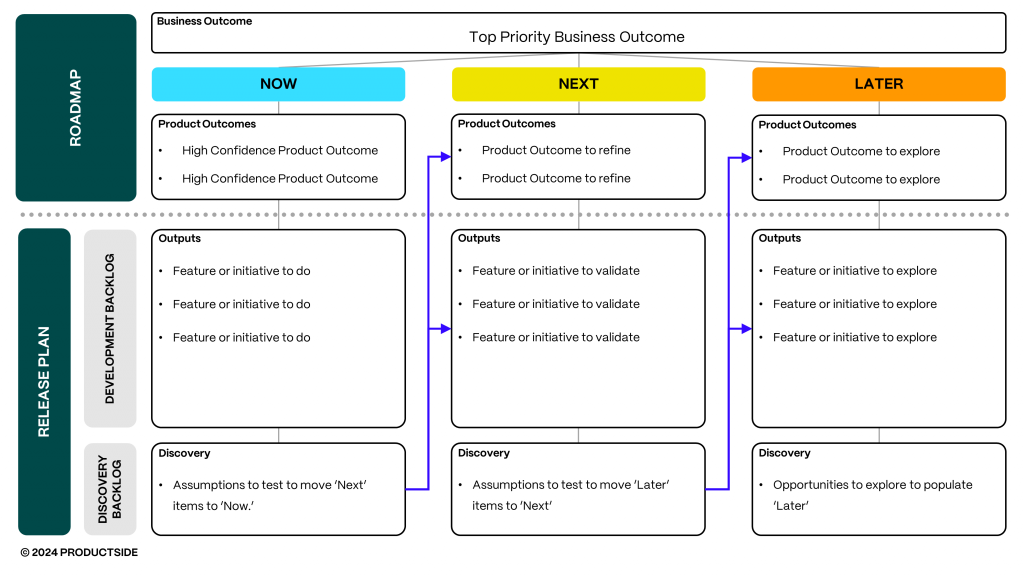
Product Management Predictions for 2026: The New User, New Metrics, and New Rules
Product management isn’t breaking. But many of the assumptions we’ve built it on are. These product management predictions for 2026

What do you think of when you hear the word ‘Roadmap?’ If you’re like me, situations like this come to mind: It was a normal day until it wasn’t. I was at my desk, ready to dig in, when the VP of Sales walked up and blurted out, “The competition just announced a new product with features X, Y, and Z. Why aren’t WE developing these features? We need to add them to the roadmap immediately; when will they be ready?”
Suddenly, it felt like my roadmap was expected to predict the future, and if it didn’t, I wasn’t doing my job. This single request threatened to disrupt projects already in development, making my product strategy impossible to execute. Moments like this highlight how the pressure to commit to hard dates can turn the best-laid plans into a ticking time bomb.
After speaking with many product managers, I realize my experiences with roadmaps are not unique. Product managers everywhere are stuck in roadmap purgatory, struggling to reach their full potential. But there is a better way. I’ll show you how to make your roadmap your strategic sidekick.
Most product roadmaps today are mislabeled—glorified timelines, not true roadmaps. A roadmap should visualize product strategy, communicating the outcomes a product is meant to achieve. It’s like a compass guiding you toward impact.
In contrast, a release plan is a prioritized list of outputs, features, and initiatives with associated timing for delivery. It’s like a calendar providing target dates and deadlines. While confusion exists between these tools, they are closely connected. The roadmap guides the release plan, and the release plan drives motion toward achieving the roadmap’s outcomes. Now that we know the tools, let’s use them right.
Confusing release plans for product roadmaps leads to a focus on features rather than results. An outcome-based product roadmap shifts from outputs to outcomes, putting outcomes on the front lines so we never lose sight of the impact we intend to achieve. It’s your strategic North Star, guiding every decision toward impact—let’s explore how to make it work.
We can’t talk about an outcome-based product roadmap without discussing strategy. Strategy is about aligning goals, making decisions, and executing the plan. An outcome-based roadmap connects these dots, creating a visual strategy. It shifts attention away from fixed deadlines and toward the impact your product is meant to achieve, giving you the flexibility to adapt without being tied to dates.
An Outcome-Based Product Roadmap isn’t just a visual timeline; it’s a strategic guide. It includes three key elements:
To create an Outcome-Based Product Roadmap, follow these steps:
By connecting business and product outcomes, an Outcome-Based Product Roadmap provides clarity and direction, helping to avoid the pitfalls of feature-focused planning.
As you prioritize nail the ‘Now, Next, Later’ approach
While your Outcome-Based Product Roadmap focuses on strategy and outcomes, your release plan puts that strategy into action. By aligning the release plan with the roadmap, you ensure that each output or feature released drives progress toward your goals.

Using the outcome-based product roadmap to set development priorities, the release plan can align with strategic goals without making premature promises. As outcomes become clearer, through product discovery, the release plan evolves, ensuring deadlines are based on well-informed decisions rather than assumptions.
Are you feeling a little intimidated? Don’t be. By taking these small steps, you’ll transform how your team approaches product strategy.
Incorporating outcomes into your existing roadmaps shifts the conversation from ‘when will this be done?’ to ‘what are we trying to achieve?’ This small but meaningful change helps you manage expectations and keeps the focus on ‘why’ and ‘what,’ instead of ‘when’ and ‘how.’
Navigating product roadmaps and product release plans can be a daunting task, so why not benefit from the expertise of the Productside team and gain a certification in product management by completing one of our product management training courses. Learn from the best in the business to master roadmaps and much more!


Product management isn’t breaking. But many of the assumptions we’ve built it on are. These product management predictions for 2026

If you’ve ever worked with early-stage founders, you know this: product market fit for startups is rarely lost in

If you’ve ever lived through a product launch, you know the truth: go-to-market is a marathon you’re forced to